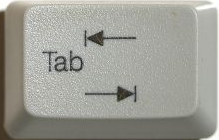addhook ("minute", "tutorialadvertise") --The hook which is called every minute is called "minute"
function tutorialadvertise() --Because a minute can't tell you anything about a player or a weapon, the brackets are just empty
for (i = 1, 32, 1) do -- We use 32 here, because the maximum number of players on a server is 32
if (player(i, "exists")) then --If the player with the id we are currently looping exists then
msg2(i, "Hello, this script is a tutorial") --msg2 has two parameters. The first is the id of the guy you want to send something, the second is the text.
end
end
end |


